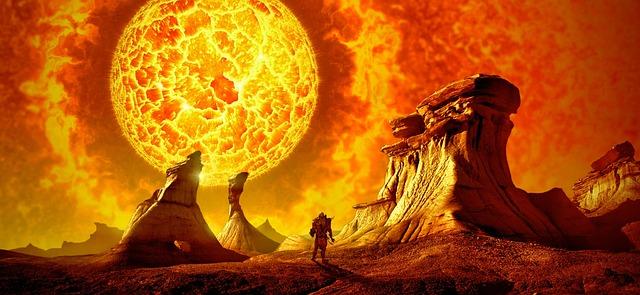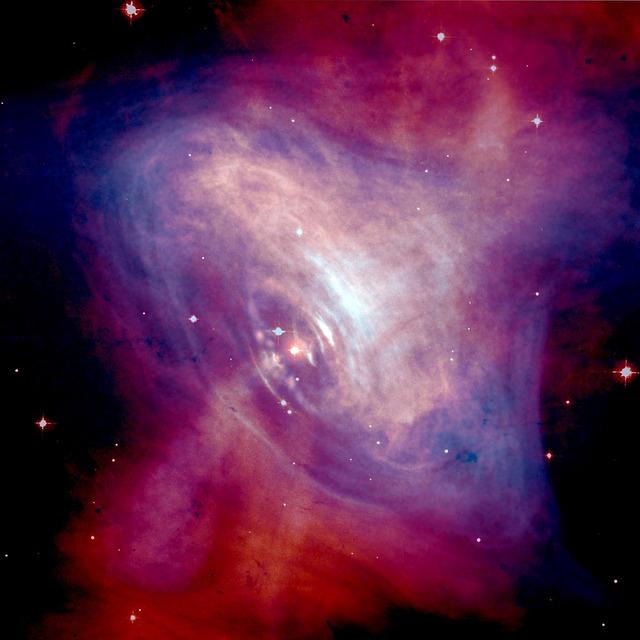In the unfathomable depths of our oceans, where light struggles to penetrate and life thrives in extraordinary forms, a remarkable discovery has surfaced, challenging our understanding of the cosmos and its ancient cataclysms. Researchers have unearthed what appears to be evidence of a long-sought ‘supernova graveyard’ — a mysterious repository of stellar remnants that could reshape our knowledge of cosmic evolution. This newfound treasure trove at the bottom of the sea beckons scientists to delve deeper, offering a unique glimpse into the explosive history of our universe. In this article, we explore the implications of this discovery, the science behind it, and what it could reveal about the life cycles of stars and the origins of our very own solar system.
Exploring the Depths: Unveiling the Secrets of a Supernova Graveyard
The recent discovery at the ocean’s depths has sparked a wave of excitement among astrophysicists and oceanographers alike. Researchers believe that the materials retrieved from this submerged site may provide clues about the dynamic processes surrounding supernovae, the spectacular explosions marking the death of massive stars. This site, often referred to as a “supernova graveyard,” might reveal crucial insights into the origins of cosmic elements and the lifecycle of stars. With each sediment core analyzed, the narrative of stellar evolution unfolds, challenging our understanding of the universe.
Key features of this intriguing find include:
- Isotope Composition: Signatures of rare isotopes, potentially formed during supernova events, have been identified.
- Element Distribution: An unusual concentration of heavy elements, such as gold and platinum, likely produced in the chaos of supernova explosions.
- Historical Context: Layers of sediment that suggest a timeline of cosmic events, offering a glimpse into our galactic history.
The implications of this discovery can be better understood by analyzing the correlation between the elements found and the theoretical models of star death. A comparative table highlighting some of these elements is presented below:
| Element | Estimated Source | Significance |
|---|---|---|
| Gold | Supernova Fusion | Rare, valuable, formed under extreme conditions |
| Uranium | Nuclear Reactions | Key in tracing the origins of heavy elements |
| Platinum | Supernova Remnants | Indicators of stellar explosions and processes |
Scientific Significance: Understanding Stellar Death and Its Impact on Cosmic Evolution
Research into stellar death plays a pivotal role in our understanding of the universe and its historical narrative. Newly unveiled evidence of a potential ”supernova graveyard” at the ocean’s floor offers a treasure trove of insights into the lifecycle of stars. This discovery not only sheds light on the end stages of stellar evolution but also positions these cosmic events as significant drivers of galactic formation and evolution.
The processes leading up to a star’s supernova—an explosion marking the final phase of a massive star’s life—are crucial in recycling materials throughout the cosmos. Elements forged in these cataclysmic blasts contribute to the formation of new stars, planets, and ultimately, the building blocks of life. Highlights of this cosmic recycling include:
- Element Formation: Supernovae synthesize heavy elements such as gold and uranium, scattering them into space.
- Shockwaves: The explosion creates shockwaves that can trigger nearby star formation.
- Galactic Distribution: The remnants of supernovae influence the structure of galaxies over billions of years.
To grasp the impact of stellar deaths, it is essential to recognize how they affect cosmic environments. The table below summarizes key stages of stellar evolution that culminate in a supernova, illustrating their interconnectedness.
| Stellar Phase | Duration | Key Events |
|---|---|---|
| Hydrogen burning | Millions of years | Stable phase of main-sequence stars |
| Helium burning | Thousands of years | Core contraction and heating |
| Supernova | Days | Explosive end releasing energy and elements |
This fresh insight into the cosmic processes surrounding stellar death invites further exploration. By studying these underwater remnants, scientists can refine their models of galactic evolution and element distribution, ultimately enhancing our grasp of the universe’s history and our own origins. The intersection between these cataclysmic events and the formation of the stars and planets is a critical thread in the fabric of cosmic evolution.
Implications for Future Research: What This Discovery Means for Astronomy
The revelation of possible remnants from a ‘supernova graveyard’ at the ocean’s depths opens up a multitude of avenues for astronomical exploration. This discovery can enhance our understanding of stellar evolution and the life cycle of massive stars. By investigating the physical properties and chemical signatures of these underwater relics, researchers may unlock the secrets surrounding the transient phases of supernovae and their subsequent impact on galactic chemistry.
Future studies could focus on:
- The composition of the found materials: Analyzing isotopes and elements can reveal insights into the types of supernovae that generated them.
- The spatial distribution: Mapping the locations of these remnants might help astronomers understand the historical distribution of massive stars in our galaxy.
- Creating models of stellar death: This could lead to better theoretical models that predict supernova behavior, the frequency of events, and their effects on surrounding cosmic environments.
Moreover, interdisciplinary collaboration will be crucial. Combining marine geology, astrophysics, and even archaeology could provide richer context. By developing projects that integrate oceanic studies with astronomical research, scientists can create comprehensive frameworks to explore how celestial events influence planetary systems. Such collaborations could lead to innovative methodologies and enhance our grasp of both our planet’s history and the universe at large.
Preserving Our Find: Recommendations for Sustainable Exploration of Oceanic Mysteries
As scientists venture into the depths of the ocean, uncovering extraordinary findings such as evidence of a “supernova graveyard,” it becomes crucial to balance exploration with conservation. Sustainable practices must be integrated into every stage of oceanic research to ensure these delicate ecosystems remain intact for future generations. Here are some key strategies to promote responsible exploration:
- Moderation in Sampling: Limit the number of samples taken to reduce impact on the local environment.
- Use of Non-Intrusive Methods: Employ technologies like remotely operated vehicles (ROVs) and underwater cameras to minimize physical disturbances.
- Collaborate with Local Communities: Engage indigenous populations and local scientists in planning and conducting research to ensure respect for traditional knowledge and practices.
Furthermore, understanding the specific habitats where these discoveries are made is essential. Ecosystems, such as hydrothermal vents and deep-sea coral gardens, are often fragile and cannot withstand the pressures of human intervention. Implementing protective measures will not only preserve these environments but also yield more authentic scientific results. Consider the following preservation techniques:
| Technique | Benefit |
|---|---|
| Designated Marine Protected Areas (MPAs) | Safeguard critical habitats from destructive activities. |
| Regular Environmental Impact Assessments (EIAs) | Identify potential risks associated with exploration initiatives. |
| Public Awareness Campaigns | Inform and educate the community about preserving oceanic treasures. |
fostering a culture of stewardship among ocean explorers is paramount. This involves not only adhering to guidelines but also taking proactive steps to advocate for the health of oceanic regions. By prioritizing sustainability, researchers can ensure that their findings, such as those from the mysterious depths, serve as a beacon of hope rather than a cautionary tale. Initiatives could include:
- Developing Best Practices: Codifying sustainable methods and sharing them widely within the scientific community.
- Incorporating Citizen Science: Encouraging public involvement in monitoring and protecting marine environments.
- Continuous Education and Training: Keeping researchers informed about the latest developments in sustainable techniques and technologies.
The Way Forward
the recent discovery at the ocean floor offers not just a glimpse into the cosmic past, but also a fresh perspective on the life cycles of stars and the isotopes they leave behind. As scientists continue to analyze these peculiar remnants, we stand at the threshold of unlocking secrets that could reshape our understanding of astrophysics and our universe’s history. The concept of a “supernova graveyard” beckons curiosity, hinting at the vast interplay between stellar evolution and marine geology. With each wave that laps at the shore, further revelations await beneath the surface, inviting us to deepen our exploration of the relationship between the cosmos and our planet. As we marvel at this intersection of oceanic depths and astronomical phenomena, the journey of discovery promises to be as infinite as the universe itself.
